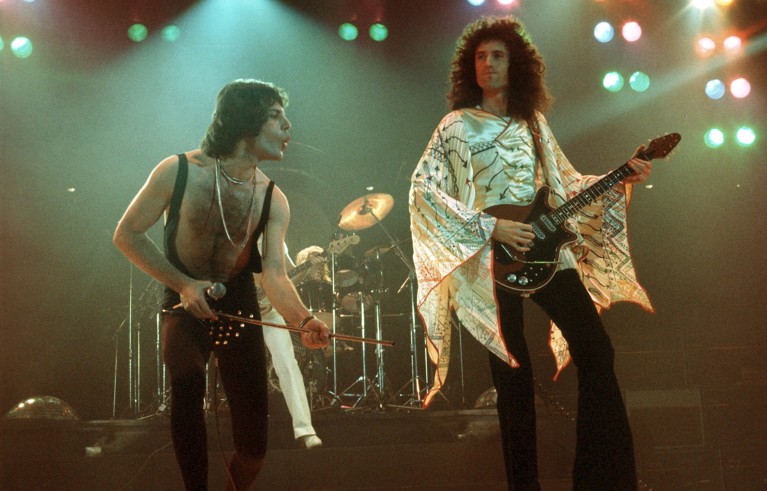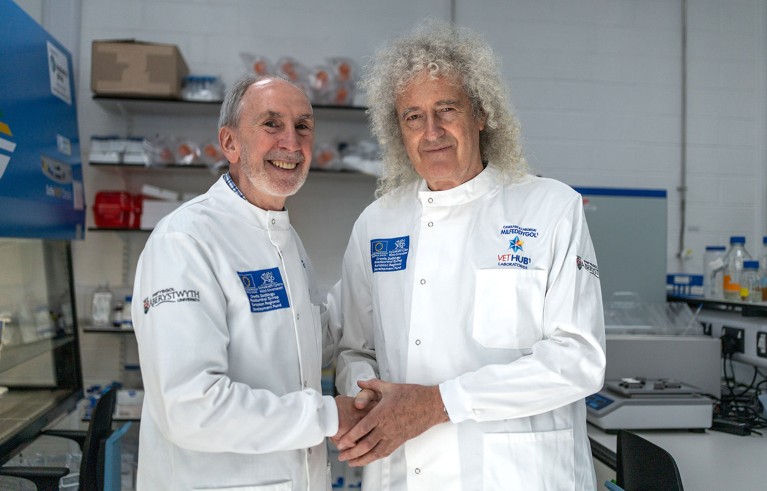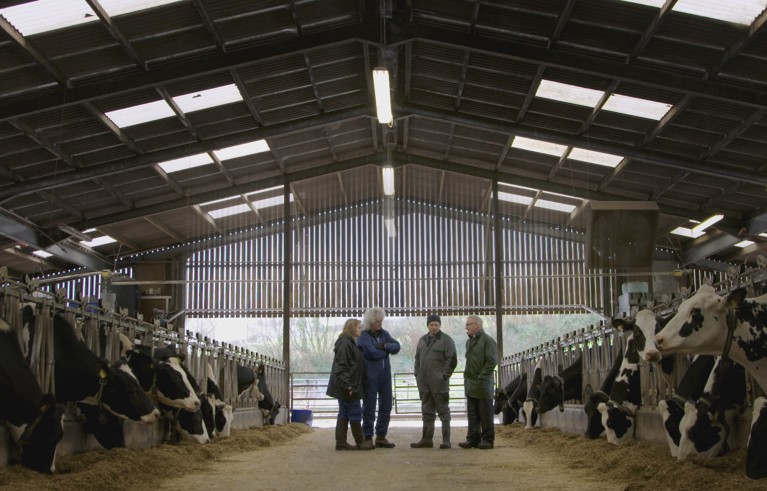Brian May has many strings to his guitar. The musician, who is still touring with his rock band Queen, is also an astrophysicist, specializing in three-dimensional stereoscopic images of distant bodies. And to the UK public, he’s also a passionate campaigner for animal rights.
After abandoning his PhD at Imperial College London in 1974 to follow his musical passions, May finally returned to complete his doctorate in 2007. Soon after, the rockstar embroiled himself in a polarizing scientific row over whether the European badger (Meles meles) was causing mass infection of cattle with bovine tuberculosis (TB). Each year, the problem costs the UK government more than £100 million (US$130 million) and leads to the slaughter of more than 20,000 cows.
Some scientists initially backed the government’s policy of culling badgers — 230,000 have been killed since 2013 — although many now doubt the approach’s effectiveness. The past government had planned to phase out culling in favour of vaccination, but 20 culling licences were issued this year. The new Labour government has said that it plans to end culling, but these licences will continue.
In a BBC documentary airing in the United Kingdom on 23 August, May describes his decade-long research project to understand what is behind bovine TB, alongside Anne Brummer, chief executive of their co-founded wildlife charity The Save Me Trust. “He lives and sleeps this,” says Brummer. “He hates injustice and is a very passionate, compassionate person. He just wants to solve these problems.”
May spoke to Nature about how his scientific skills have been essential to his work, and the “monstrous” findings made by his team, which includes Brummer, farmer Robert Reid and veterinary surgeon Dick Sibley.
What has the influence of your scientific background been on your work with animals? Do you think it gave you more confidence?
Absolutely. The scientific method is something precious, and you do learn it — the hard way — if you’re doing a PhD. Everything comes down to asking the right questions and keeping an open mind, and resisting the terrible inclination that scientists have, because they’re human beings, of finding what you expect to find. We’ve all been told that badgers are how the pathogen is spread, so we look for that pattern. And sadly, I think that’s why the myth has perpetuated.

Brian May (right) left his astrophysics PhD in 1974 to pursue music with Freddie Mercury (left) and their band Queen.Credit: Michael Ochs Archives/Getty Images
Were you convinced from the beginning that badgers were not causing the spread of TB in cattle?
I was always suspicious, but I didn’t have anything to justify my position. But I felt that even if they were responsible, it wasn’t their fault. I remember at a Zoological Society meeting around 13 years ago where I had the temerity to stand up and say “Doesn’t anybody thing this is morally wrong?”, and I felt like a child, because everybody looked at me with such scorn. I realized that the only way to get anywhere was to stop shouting, start listening and get into the science. Along the way I think we’ve made breakthroughs that I didn’t even dream of making.
You’ve spent the last 12 years as part of a research team on the Gatcombe farm in South Devon, studying TB transmission. What did you find?
We developed a view on how the mycobacterium responsible for TB transmits from one animal to another. TB has classically been known as a respiratory disease, but our discovery is that a cow doesn’t contract TB by breathing in something, it contracts it by eating the pathogen from defecation from a neighbouring cow. It’s a monstrous discovery because once you start understanding your enemy, then you can start to defeat it. Now we know that the thing is passed from cow to cow, because of poor hygiene.
How does testing contribute to the problem?
We also found that the [government-sanctioned] skin test for TB is as little as 50% accurate. That’s a terrible thing to discover, because you might as well toss a coin. We discovered one cow had been through the skin test 30 times and pronounced healthy, and when it went to the postmortem, it was riddled with TB. So the skin test is the villain of the piece, and the fact that farmers are relying on this incredibly inaccurate test to remove cows from their precious herds and take them off to slaughter is a scandal.

Brian May (right) with Glyn Hewinson, a specialist in bovine tuberculosis at Aberystwyth University, UK.Credit: BBC/Athena Films
Do you have any plans to put your findings into a scientific paper?
Absolutely, yes. That’s definitely one of our next steps. It kind of irks me that we don’t have a scientific paper out there, but all in good time.
What makes you so convinced that badgers play no part in transmission?
On Robert Reid’s farm we, for some time, had a healthy herd with an infected population of badgers around it. And all through this period, almost 10 years, there’s never been a single infection from the cows that could graze in the fields, near where the badgers live. All have been in the sheds.
There is also a farmer in Tiverton who built an amazing fence five miles long around his beef herd, to keep the wildlife out. Eventually he lost half his herd. How did that happen? It’s highly likely that a new bull — shown as healthy by the skin test — is the way this herd became destroyed. It’s likely that this is a pattern we’ve seen in many other places as well. I would like farmers to see the documentary and think, OK, maybe we’re ready for a change. We need to change so many methods in cattle farming to solve this problem.

The Save Me Trust chief executive Anne Brummer (left) and Brian May (second from left) meeting with two farmers in the BBC documentary Brian May: The Badgers, the Farmers and Me.Credit: BBC/Athena Films
In the film, you say that speaking out against badger-culling has become as important to you as your music. Where does astrophysics fit in?
It’s right up there. I’m still doing astrophysics. I’m privileged to be part of a few teams of exploration in NASA, the European Space Agency and the Japanese Aerospace Exploration Agency. I have a great time doing that. What I contribute is stereoscopy and it’s been a lot of fun, because it gives you very human insights into the exploration of these wonderful places they’re visiting.
What does the bovine TB affair teach us about science and policymaking?
All I’d like to say is that it worries me that the peer review process can embody flaws. If you get the people to peer review who are in the same clique, you’re not going to thoroughly enough peruse the material.
This interview has been edited for length and clarity.


